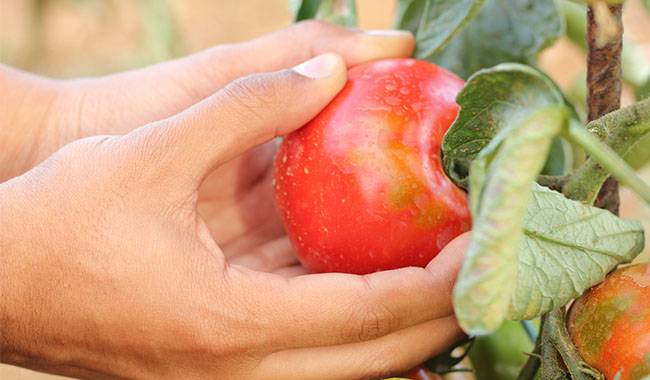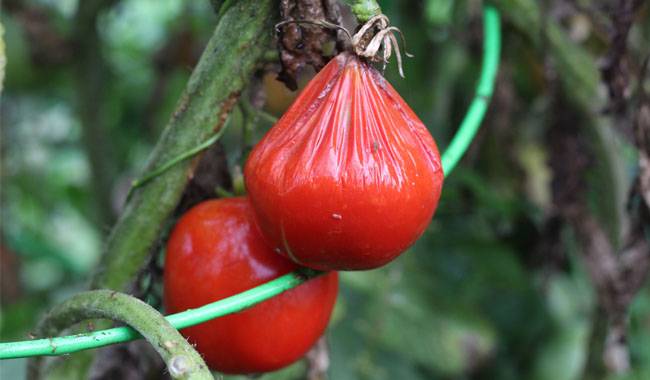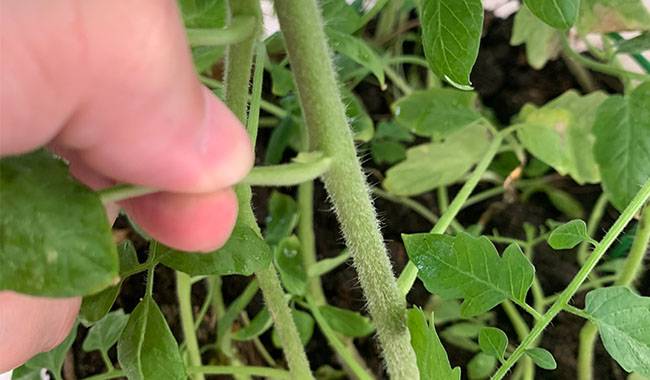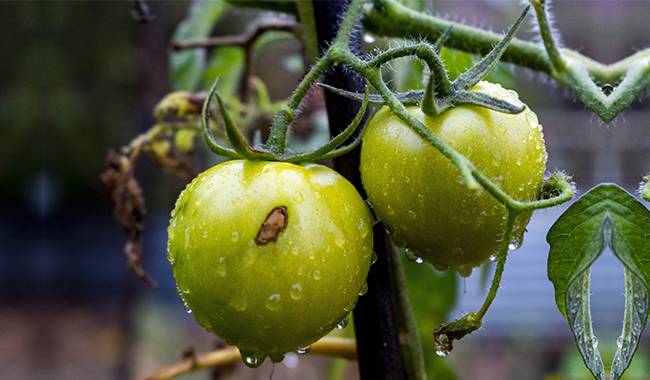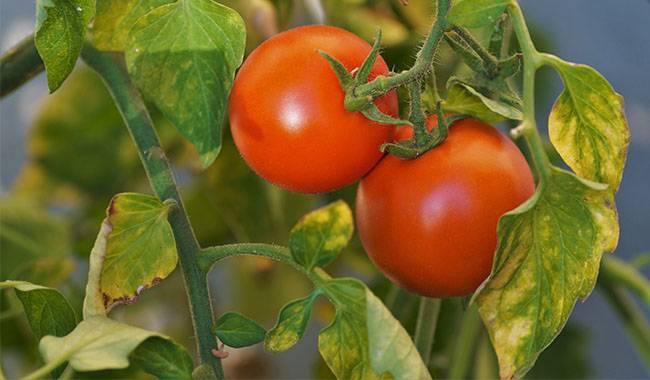
Without exception, all gardeners observed yellowing leaves on the tomatoes in their plots. There is nothing surprising here because yellow leaves on tomatoes occur for a whole host of different reasons.
For example, lack of certain elements in the soil, pests, and diseases, too much sunlight or water in the soil (or lack thereof).
Instead of panicking when tomato leaves turn yellow, you should calmly sort out the situation, find the cause of this phenomenon, and save the plant in time before it’s too late.
THE NATURAL PATTERN OF YELLOWING OF TOMATO LEAVES
Yellowing of tomato leaves due to natural causes was observed, for example, when transplanting seedlings from individual pots to permanent ground. In such cases, the yellowing of tomato leaves is often observed, located in the lowest part of the plant.
This is a rather natural phenomenon, known as the adaptation of tomato plants to environmental conditions different from the previous ones. Absolutely any tomato transplant is nothing but stress for the plant, which usually happens to manifest itself in the form of yellowing of the leaves, and often the lowest. Why does this happen?
Usually, it is a temporary failure of the roots to supply nutrients to the plant. The tomato plant chooses the best option for maintaining vigor and actually rejects the lower leaves for the benefit of the upper leaves.
If you notice that some of the lower leaves on your tomato plants have yellowed after transplanting, then do not panic, you should wait a few days and if the leaves themselves do not fall off, you will need to remove them by hand.
MANIFESTATIONS OF DISEASE AND PEST ACTIVITY
Yellowing of tomato leaves occurs as a result of certain diseases, such as phylloxera, mosaic disease, and fusarium, which affect the plant. Often, yellow tomato leaves indicate the presence of the disease, which is one of the earliest symptoms.
In addition to diseases, the cause of yellowing tomato leaves can be insect pests such as aphids, whiteflies, tobacco thrips, and Colorado beetles.
EXCESS OR INSUFFICIENT MOISTURE IN THE SOIL
When there is a lack of water on the ground, tomatoes begin to conserve water and try to reduce the evaporation of water and therefore to get rid of the leaves by repelling them. In the absence of water, the leaves will first curl due to reduced evaporation and then begin to turn yellow and die.
Watering tomatoes is a must, but soil conditions must be monitored and can also adversely affect the plant if there is too much water. With too much moisture, the tomato plant begins to form a rich vegetative cover with a large number of leaves and shoots, while the root system will be underdeveloped and poorly able to absorb nutrients.
As a result of this phenomenon, this layer of soil becomes deficient in nutrients, most often nitrogen, which causes the leaves on the tomato plants to turn yellow. In order to eliminate or stop these negative processes in the plant, you should temporarily stop watering and add nitrogen to the soil in the form of dissolved urea in the amount of one teaspoon per 1 square meter of soil.
INSUFFICIENT OR TOO MUCH SUNLIGHT
This can also cause the leaves of tomatoes to turn yellow. For example, when growing plants in a sparse planting pattern in open areas, the plants may be exposed to too much sunlight during a period when they are not yet fully mature. For this type of planting, it is recommended that plants be shaded for several weeks after planting if there is a lot of heat.
If the planting pattern is too dense, or if the tomato plants are planted in shade, the lower or middle leaves usually begin to yellow as well. Repotting such plants can be dangerous, but it is best to remove those leaves that are shading each other and thin out the mass of vegetation.
DAMAGED ROOTS OR OTHER ROOT PROBLEMS
It is not uncommon for yellowing leaves on tomato plants to be caused by root problems. Leaf yellowing often occurs on plants with weak root systems that do not provide enough nutrients to the above-ground parts, starving the plant and causing the leaves to turn yellow.
Problems with tomato roots can occur for a number of reasons.
- The roots may be damaged by pests.
- Roots may be damaged when transplanting seedlings from individual containers to the ground.
- When loosening the soil too deeply (when struggling with weeds).
- Poor quality of the initial seedlings (another cause of weak roots), which may be fat, elongated, as well as significantly space-saving in growth, not allowing the root system to develop adequately.
Helping the tomato root system recover can be difficult and it is best to simply wait and provide the plant with adequate nutrients and water in the meantime.
Poor quality tomato seedlings are usually sick for a long time after transplanting and their leaves may turn yellow not only immediately after transplanting, which is normal, but also long afterward. Such seedlings can usually be well helped by a medicated “rooting”.
Do not forget that you can restore the balance of the most important elements in the plant by foliar spraying. It is better to use nitroglycerin, which contains all the most important elements. Dissolve a teaspoon in a bucket of water and work it in the evening every 3-4 days until the plant stops turning yellow. Then you can remove the leaves that have yellowed.
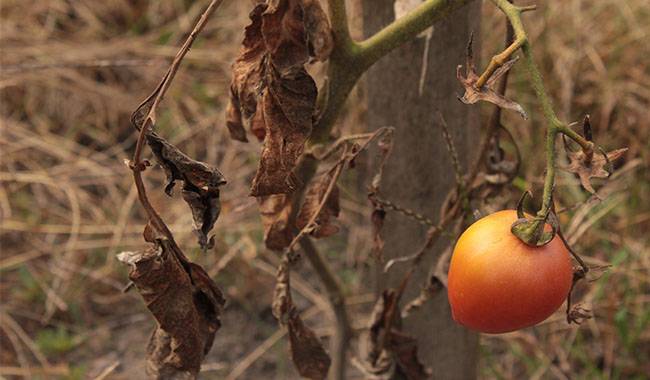
EXCESS OR DEFICIENCY OF KEY NUTRIENTS
The main cause of yellow tomato leaves is almost always a deficiency or excess of various important plant elements. In order to find out which elements are deficient or excessive, you must consider whether the yellowing of the leaves is at the bottom or the top of the plant. You will usually encounter this in tomatoes because of a nitrogen deficiency.
Nitrogen deficiency
The leaves of tomatoes either turn yellow or discolor, the young leaves form smaller, and the plant itself becomes weaker in appearance. Very dangerous nitrogen deficiency during the active growth of the above-ground parts and during the formation of the fruit.
If the soil is deficient in nitrogen, it is necessary to supplement it. In most cases, urea is used for this purpose. The amount of this fertilizer should be equivalent to one tablespoon per bucket of water, which is the percentage per square meter of soil under tomatoes, which are deficient in nitrogen.
Cow manure can be used at the rate of one liter per bucket of water, which is also the standard per square meter of soil. Poultry manure can be used in combination with wood ash or soot. The amount of bird manure – 500 grams per bucket of water, wood ash, or soot – 250 grams per bucket of water, which is the standard for 1 square meter of soil.
You can also foliar feed tomatoes, i.e. simply spray them with urea dissolved in water. In this case, the concentration should be reduced to one teaspoon per bucket of water. The plants should be treated so that the above-ground part is completely moistened before moving on to another plant.
However, the concentration of these fertilizers should not be exceeded, as this may lead to an excess of this nutrient, which will cause the plant to start accumulating too much vegetative mass, fat, which is detrimental to the development of the tomato root system and may also lead to yellowing of the leaves.
It is more difficult to combat excess nitrogen than deficiency: you will have to risk frequent watering to flush the nitrogen out of the soil.
Phosphorus deficiency
Phosphorus deficiency in tomato plants is manifested by yellowing and lightening of the leaves with curved edges. Often, the color of the stems may also change to purple or dark green. The leaves usually turn yellow at the bottom of the plant.
To get rid of phosphorus deficiency, you have to feed the plants with 15 grams of calcium superphosphate per square meter. You can try dissolving calcium superphosphate in warm water at a dosage of 10 grams per bucket. You should know that calcium superphosphate produces a precipitate when it is dissolved in water.
Sometimes gardeners bury fish heads in the soil next to the tomato plants. This is acceptable, but it does not allow to quickly provide the plant with enough phosphorus.
Potassium deficiency
In the case of potassium deficiency, the leaves of tomato plants yellow, and then the leaves located at the bottom of the stem dry out. It starts from the edge of the leaves and looks like tissue necrosis. The yellowing and drying of the leaves are also accompanied by the formation of new leaves, which are usually unnaturally thick and small. The stem then becomes woody. Leaves curl inward before wilting.
To remedy potassium deficiency, it is best to first treat plants with potassium dissolved in water. 8-10 grams of potassium sulfate per bucket of water should be used. After two or three treatments at intervals of 4 to 5 days, potassium sulfate must be added to the soil at a rate of 15 grams per square meter, preferably in water-soluble form.
Zinc deficiency
In case of zinc deficiency, the leaves of tomatoes also start to turn yellow. In addition, zinc deficiency can lead to brown or gray spots on the leaves. This will lead to premature death.
Magnesium deficiency
In the case of magnesium deficiency, the color of tomato leaves will turn yellow between the veins, they will also curl inward and older leaves will have grayish-brown stains on them. These leaves will fall off.
Magnesium deficiency can be remedied by foliar spraying of magnesium nitrate (5 g/10 liters).
Calcium deficiency
The upper leaves of tomatoes often turn yellow. If calcium is deficient, the lower leaves will turn green unnaturally.
Boron deficiency
In the case of boron deficiency, the uppermost leaves of tomatoes often turn yellow, the plant unnaturally luxuriates and drops flowers. In case of boron deficiency, spray the plants with a 1% solution of boric acid at night.
Sulfur deficiency
In the case of sulfur deficiency, the tomato leaves at the top of the plant will initially turn yellow, and then the lower leaves may turn yellow. This is also accompanied by the formation of extremely thin and brittle leaves.
Micronutrient deficiencies should be corrected by applying fertilizer at the concentration indicated on the package. For minor micronutrient deficiencies, which can be determined by a thorough soil analysis of your plot in the laboratory, the addition of wood ash, charcoal, or fertilizer consisting of digested weeds is acceptable.
CONCLUSION
Thus, we have listed the main and most common causes of the yellowing of tomato leaves. It is possible that on their plots, our readers have observed the yellowing of tomato leaves, among other causes. If so, please let us know in the comments.




